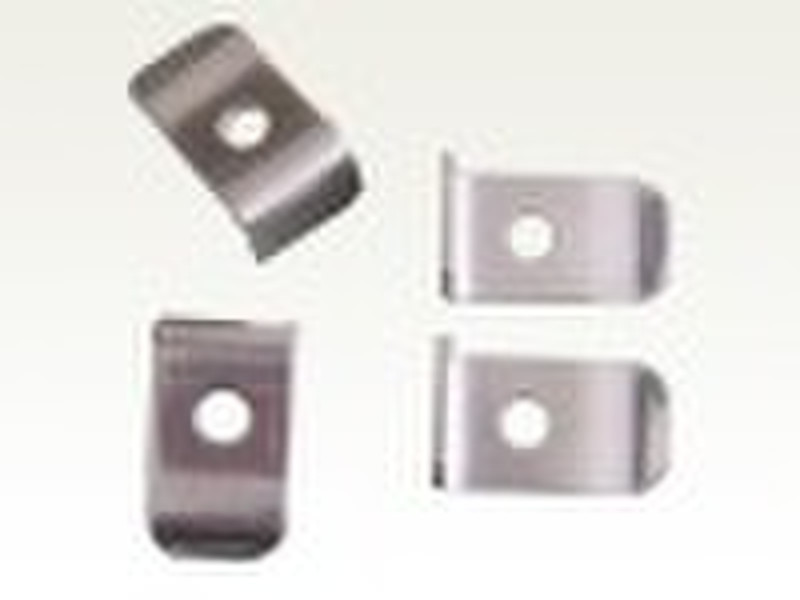Catalog
-
Catalog
- Agriculture
- Apparel
- Automobiles & Motorcycles
- Beauty & Personal Care
- Business Services
- Chemicals
- Construction & Real Estate
- Consumer Electronics
- Electrical Equipment & Supplies
- Electronic Components & Supplies
- Energy
- Environment
- Excess Inventory
- Fashion Accessories
- Food & Beverage
- Furniture
- Gifts & Crafts
- Hardware
- Health & Medical
- Home & Garden
- Home Appliances
- Lights & Lighting
- Luggage, Bags & Cases
- Machinery, Hardware & Tools
- Measurement & Analysis Instruments
- Mechanical Parts & Fabrication Services
- Minerals & Metallurgy
- Office & School Supplies
- Packaging & Printing
- Rubber & Plastics
- Security & Protection
- Service Equipment
- Shoes & Accessories
- Sports & Entertainment
- Telecommunications
- Textiles & Leather Products
- Timepieces, Jewelry, Eyewear
- Tools
- Toys & Hobbies
- Transportation
Filters
Search
Metal Part
original price: 0,01 USD
Ningbo, China
Production capacity:
200 Ton / Month

Danne Lee
Contact person
Basic Information
Metal Part(CNC Part) 1.Material:Stainless Steel,Iron,Alum,Brass 2.Brand:OEM 3.Size:As request 4.Production Processing:Stamping 5.Surface:Polish,plain,painted,brush,zp,black,etc 6.Quality: Approved and assured 7.Machine:CNC, Stamping machine,Drawing machine,Welding machine etc 8.Mould: We open by ourself 9.Usage Scope:Car industrial, machine, sailing, road,air industrial,dairy product etc 10.Packing:General carton packing,pallet packing and small box packed 11.Delivery time:20-30days after confirmation of order or receipt of depoist 12.Payment term:T/T or L/C Definition: A metal is a chemical element that is a good conductor of both electricity and heat and forms cations and ionic bonds with non-metals. In chemistry, a metal is an element, compound, or alloy characterized by high electrical conductivity. In a metal, atoms readily lose electrons to form positive ions (cations). Those ions are surrounded by delocalized electrons, which are responsible for the conductivity. The solid thus produced is held by electrostatic interactions between the ions and the electron cloud, which are called metallic bonds. Categories: Base metal In chemistry, the term base metal is used informally to refer to a metal that oxidizes or corrodes relatively easily, and reacts variably with dilute hydrochloric acid (HCl) to form hydrogen. Examples include iron, nickel, lead and zinc. Copper is considered a base metal as it oxidizes relatively easily, although it does not react with HCl. It is commonly used in opposition to noble metal. In alchemy, a base metal was a common and inexpensive metal, as opposed to precious metals, mainly gold and silver. A longtime goal of the alchemists was the transmutation of base metals into precious metals. In numismatics, coins used to derive their value primarily from the precious metal content. Most modern currencies are fiat currency, allowing the coins to be made of base metal. Ferrous metal The term "ferrous" is derived from the Latin word meaning "containing iron". This can include pure iron, such as wrought iron, or an alloy such as steel. Ferrous metals are often magnetic, but not exclusively. Noble metal Noble metals are metals that are resistant to corrosion or oxidation, unlike most base metals. They tend to be precious metals, often due to perceived rarity. Examples include tantalum, gold, platinum, silver and rhodium. Precious metal A precious metal is a rare metallic chemical element of high economic value. Chemically, the precious metals are less reactive than most elements, have high luster and high electrical conductivity. Historically, precious metals were important as currency, but are now regarded mainly as investment and industrial commodities. Gold, silver, platinum and palladium each have an ISO 4217 currency code. The best-known precious metals are gold and silver. While both have industrial uses, they are better known for their uses in art, jewelry, and coinage. Other precious metals include the platinum group metals: ruthenium, rhodium, palladium, osmium, iridium, and platinum, of which platinum is the most widely traded. Plutonium and uranium could also be considered precious metals. The demand for precious metals is driven not only by their practical use, but also by their role as investments and a store of value. Palladium was, as of summer 2006, valued at a little under half the price of gold, and platinum at around twice that of gold. Silver is substantially less expensive than these metals, but is often traditionally considered a precious metal for its role in coinage and jewelry. Alloys
Delivery terms and packaging
Packaging Detail: 1.pcs/box+carton, then into pallet2.pcs/carton3.per customer request Delivery Detail: 30days after receipt of deposit or L/C
Port: Ningbo or Shanghai
Payment term
Letter of credit
Telegraphic transfer
MoneyGram
Western Union
-
Payment Methods
We accept:









